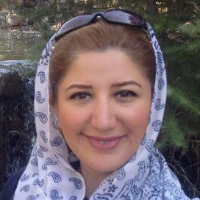Predictive modeling of the future of the Jajrood protected area, based on the evaluation of land use change trends of the past 30 years by using InVEST software
Reviewing the Function of many environmental conservation organizations over the past decades, including in Iran, shows that the focus of environmental orientations and policies, due to the lack of accurate and reliable information, is more dependent on the application of instructions and guidance methods, and less Quantitative management approaches are used. Therefore, this study is aimed at modeling the process of land use changes in the last thirty years (1987-2018) and predicting the future status in case of continuation of the current trend and using improper management patterns. For this purpose, the InVEST software is used to analyze the present situation and to draw future conditions. The results in map form provide a good opportunity for managers and decision-makers to infer trends in future changes and modify management patterns to improve conditions.
In this study, satellite images of Landsat 5, 7 and 8 According to years 1987, 2000 and 2018, were used for land use mapping in Jajrood protected area through extraction in ENVI 5.3 remote sensing software and ArcGIS 10.3 software. The accuracy of the classifications has been evaluated. According to the purpose of the study the area of study is divided into 10 user units. These units include poor rangelands, rich rangelands, planted forests, agricultural lands, barren lands, dam, residential areas, rivers, dirt and paved roads and the status and area of each user unit was determined.Finally, the scenario generator model of the InVEST software version 3.6.0., which uses a completely new approach to quantify and map, was applied in mapping the status of the future.
According to the results of the past 30 years, the extent of residential areas, roads and planted forests has increased, and the extent of river distribution has decreased, as a result poor rangelands increased and rich rangelands decreased as well as changes in barren lands was clearly visible. So that, the extent of the barren lands has declined by the year 2000 due to the conversion to man-made use (near residential areas) and poor rangelands (due to favorable weather conditions, including suitable rainfall). The situation in the Barren areas during the period ending in 2018 has increased due to the bad weather (drought) and the irregular grazing of livestock and the conversion of poor rangelands into the Barren areas. The agricultural lands have increased over a period of time due to its proximity to residential areas and then a downward trend has taken place due to increasing land value. In recent years, the Mamlou Dam has also been constructed and operated in the area. In fact, because of Jajrood's proximity to large city of Tehran and the increasing population, the need for ecosystem services in the area has increased, and man-made uses being replaced natural land uses.Future forecasts showed that the extent of planted forests, barren and residential areas would increase; rangelands and agricultural lands would decrease. During the study period, rich rangelands marked as the most reduced area and residential areas marked as the most increased area.
The Jajrood Protected Area has undergone significant land use changes over the past 30 years due to human intervention. These changes have been caused by economic and social changes. It has been accompanied by management challenges in adherence to safeguards and efforts to achieve the defined goals for such areas. The changes of natural land use and the replacement of man-made use in the face of unnecessary development have undermined the natural landscape of the Jajrood Protected Area. This study showed that changes in multiple ecosystem services will act as major drivers of human change through changes in land cover / land use.In addition to identifying land use change, identifying suitable areas for natural capital conservation, man-made use development and sustainable land use, spatial development planning can be carried out in a way that reduces future uncertainties. It will result in making informed decisions and foster synergies in both environmental and development sectors.
- حق عضویت دریافتی صرف حمایت از نشریات عضو و نگهداری، تکمیل و توسعه مگیران میشود.
- پرداخت حق اشتراک و دانلود مقالات اجازه بازنشر آن در سایر رسانههای چاپی و دیجیتال را به کاربر نمیدهد.


